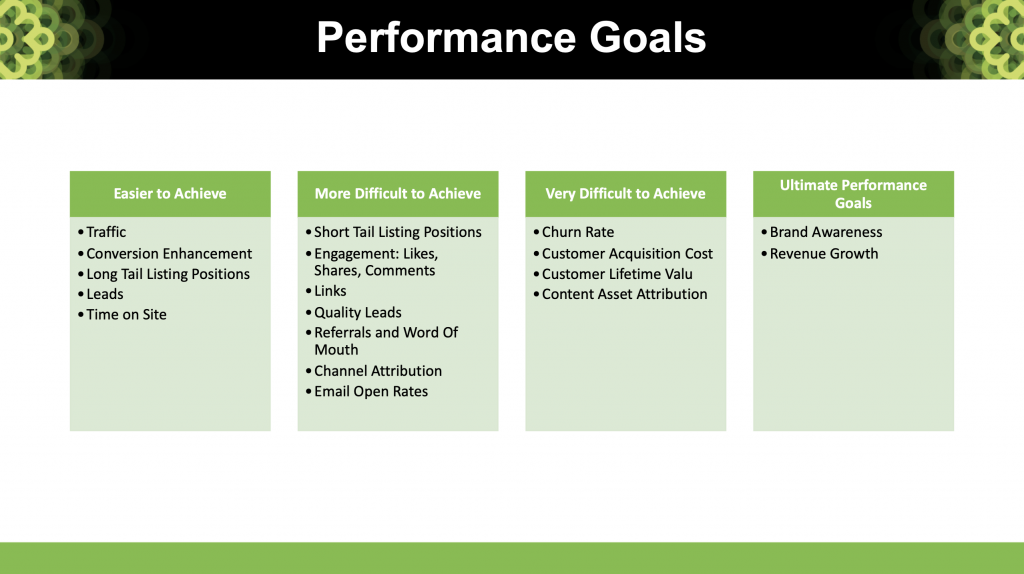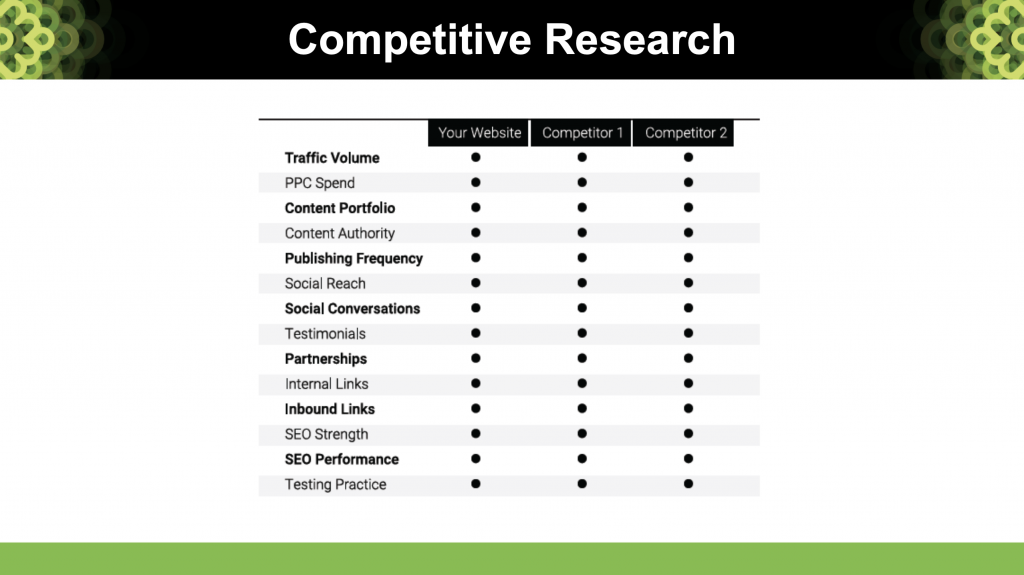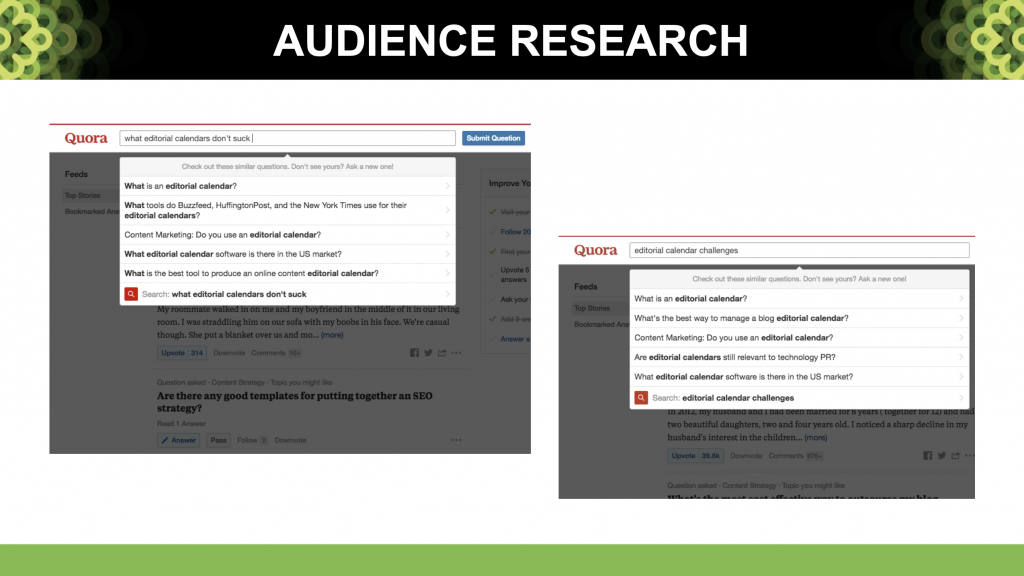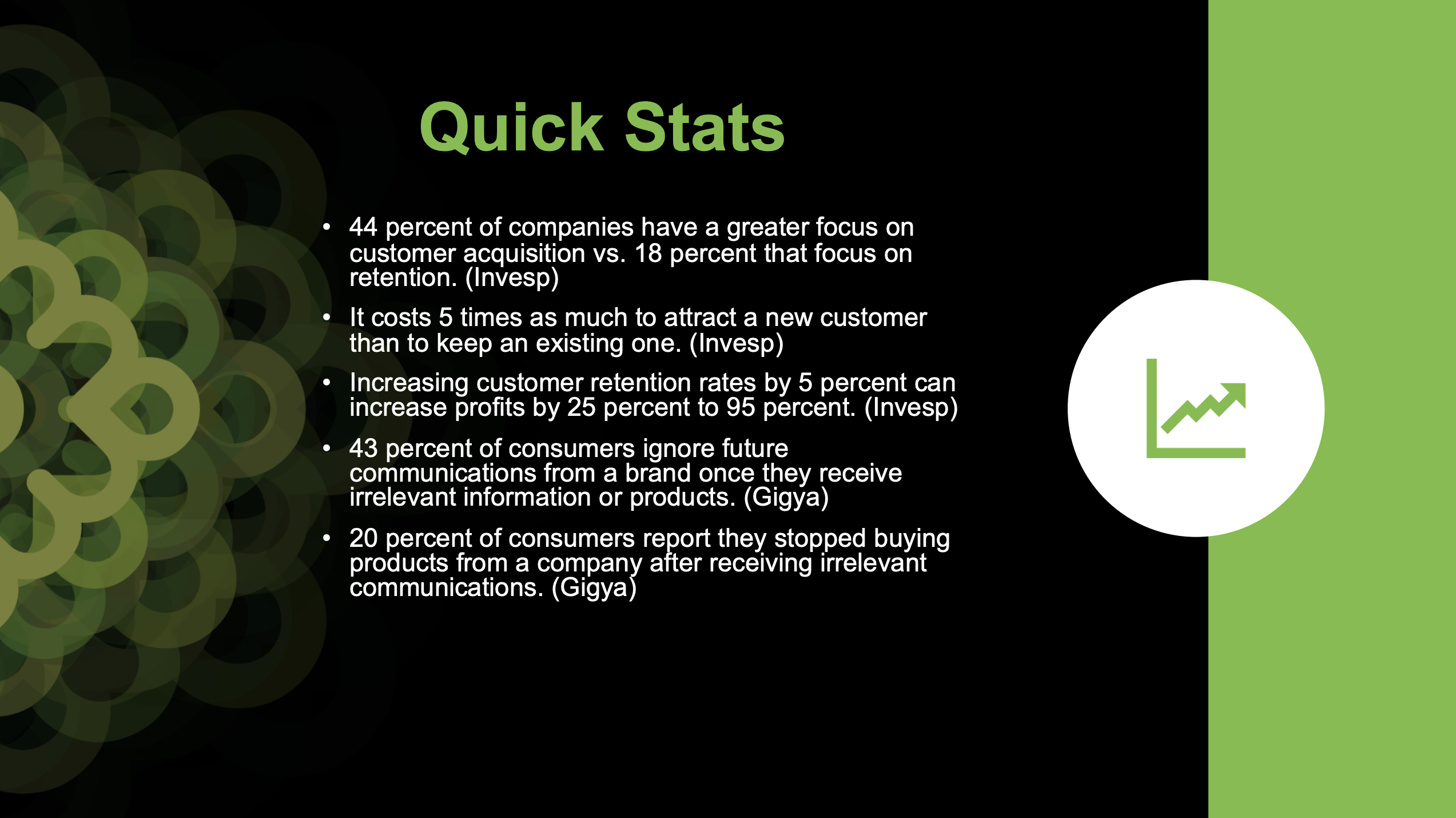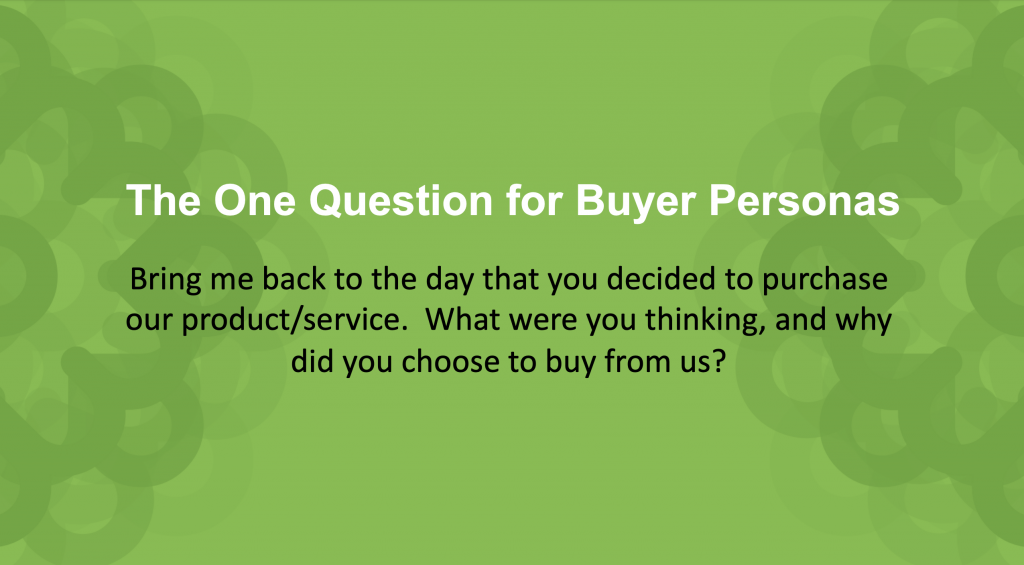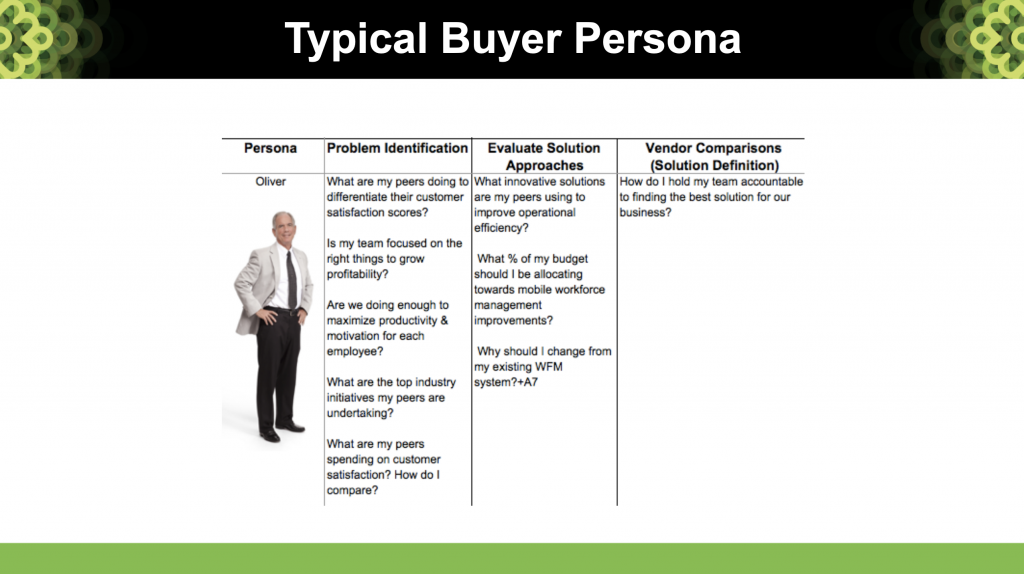Content planning is an essential first step to creating content that your audience will love. Yet some people rush past this part of the process and move straight into creation.
Creating a content plan will help ensure that your content is aligned with your audience’s needs, interests, and pain points. It will also help keep you on track while moving through the content creation process from ideation to repurposing.
Let’s start with the basics of content planning so that you can be on the right track to creating content that meets your organization and marketing goals.
Setting Content Goals
Before you get into the nitty-gritty of content planning, you’ll need to set some content goals. These goals will guide the types of content you create, the topics you talk about, and how you promote and repurpose the content you’re creating.
Here are just a few examples of performance goals you might set for your content:
Improve organic traffic.
Everyone wants to improve their organic traffic. Organic traffic is less expensive to achieve than paid traffic, and it continues to come in long after you’ve published a piece of content. In addition to working on improving SEO for your content assets, you’ll also want to focus on promotion to get as many eyes on your content as possible.
Increase conversions.
Increasing conversions is another common content goal. Conversion doesn’t always have to mean making a sale. Conversions can also refer to email subscribers, opt-in downloads, webinar registrations, and any other type of action you are trying to get your lead to take.
Increase content engagement.
While increasing engagement may not directly impact your bottom line, it does offer you a wealth of benefits in the long run. The more customers and leads engage with your content, the more opportunities you have to start a conversation and make a sale.
Increase brand awareness.
Increasing awareness for your brand may be another goal you have for your content. Though it’s hard to measure brand awareness, it is an important goal, especially for brands that are new to the industry.
Using Industry Research to Get to Know Your Audience
Industry research helps you better understand the industry and your customers. It can also give you an idea of where your brand stands in the marketplace in relation to your competitors. All of this information helps you build a strategic plan for creating content that can better connect with your ideal customers.
Here is the type of research you’ll need to do to get to know your competitors and your audience:
Competitor Research
Find out who your competitors are, what content they are creating, how effective they are at SEO, and anything else that will help you better understand their approach to content marketing.
Make sure that you document your research in a way that’s easy to understand and that you can quickly refer back to later. The competitor information will change over time, so you’ll want to conduct this research at least once a year.
Competitive Keywords
Find out which keywords your competitors are using to drive traffic to their website. This will give you a better idea of the types of keywords and phrases that your audience is using to find products or services like yours online.
SpyFu is a great tool to use for competitive keyword research. All you’ve got to do is pop the URL into the program, and it will tell you what SEO keywords your competitor is ranking for, along with other important information about these keywords.
Audience Research
What types of questions is your audience asking? What do they need help with? What kind of content are they interested in? These are all questions you can answer with audience research.
Tools like Answer the Public and Quora are great for finding out what types of questions your audience is asking. You can take these questions and use them as a starting point for creating content around your audience’s greatest pain points.
Topic Research
Topic research is an important part of content planning that allows you to dig deeper into the types of topics that resonate best with your target audience. There are a few approaches you can take to topic research:
- Check out your competitors. See what topics your competitors are covering, especially their blog and social posts that have gotten the most engagement online.
- Google your keywords. Google the keywords and phrases that you plan to target and see what types of content come up in the search engine for these keywords.
- Look at industry hashtags. What types of content are being shared on your industry’s most popular hashtags?
- Use tools like BuzzSumo to find trending topics. BuzzSumo is a great tool to use if you’re interested in learning what topics and pieces of content are most popular in your industry.
Understanding the Customer Journey
Understanding the customer journey for your ideal customer is essential if you want to create a comprehensive content plan that helps you reach your customers where they are. Sending the right messages to the right buyers at the right time will help increase your conversion rate and encourage repeat business from your best customers.
Creating a customer journey map will help you and your team visualize the journey that your customers take as they engage with your brand. As you learn more about what the customer is thinking, feeling, and doing in each stage, you’ll be able to develop content around the needs of the customer in each stage.
When you create content for each stage in the buyer’s journey, you increase your chances of attracting and engaging customers throughout the buyer’s journey. Just creating content for the top of the funnel won’t help you close sales. And writing content just for those who are ready to buy won’t help you capture the attention of those who are still learning about their problems.
Creating Buyer Personas
Do you have buyer personas for your ideal customers? While many brands think they have a good idea of who their target customers are and what they care about, you’d be surprised how much of what marketers understand about their customers is actually based purely on assumption.
By doing your target market research and developing customer personas, you can help combat the misinformation and assumptions that might get in the way of creating content your audience will love. Documenting these personas helps writers personalize content with the tone, style, and personality that will help boost engagement and drive performance goals.
Customer Research
The first step in creating buyer personas is conducting some customer research. Basic market research will only get you so far when it comes to getting to know your audience. You’ve got to really dive deep into your customer base to learn what makes them tick.
There are a few ways that you can go about conducting this research:
- Analytics: Look at the sources of traffic and navigational pathways that have brought your leads and customers to you.
- FAQs: Speak with your sales and customer service teams to see what questions leads and customers are asking during and after the purchase process.
- Surveys: Ask for feedback from your customers about your content and the ways you engage with them.
- A/B Testing: Test out different headlines, images, copy, and offerings to see what resonates best with your audience.
- Interviews: Interview your best customers and ask them why attracted them to your company and why they decided to choose you over your competitors.
Buyer Persona
Once you have the research you need on your target audience, you can start to create buyer personas. Buyer personas are fictionalized profiles of your ideal clients. While buyer personas often include things like demographic information and data on interests and buying behaviors, they should go a bit further to help you better understand what type of content you can create to resonate with your audience. For instance, you might include information on the buyer’s challenges and how they evaluate solutions.
Here’s an example of what a typical buyer persona might look like:
You can add as much information as you want to your buyer personas. Remember, the point of creating these profiles is to help you plan content that will resonate with your audience. They are also an excellent tool to give writers to help them visualize who the reader is and what they care about.
Developing a Keyword Map
And of course, the part we’ve all been waiting for – keyword research!
Keyword research can get complex, and it’s certainly time-consuming. But it’s essential to planning your content. If you want to get your content in front of your ideal audience in an organic way, you need to discover what keywords and phrases they are using to find businesses like yours online.
Taking you through the keyword research process is a whole other blog post on its own. If you want to see how WriterAccess conducts keyword research and puts together a keyword map, check out the workshop webinar recording available on CMC 365.
Get On-Demand Access to the Content Planning Workshop Webinar
On July 14, Content Marketing Conference hosted a Content Planning workshop webinar with CMC founder, Byron White; WriterAccess Sr. Content Strategist, Sarah Jane Burt; and Atlassian’s Content Strategy Lead, Ashley Faus. This 3-hour deep-dive presentation provides a wealth of information on content planning tactics and tools.
Did you miss our Content Planning Workshop Webinar? You can watch the entire session on-demand through CMC 365.
To get access to CMC 365, register for CMC 2021.


